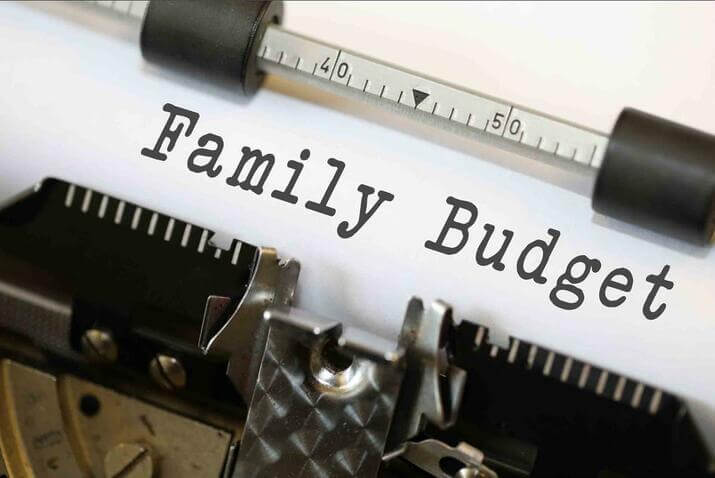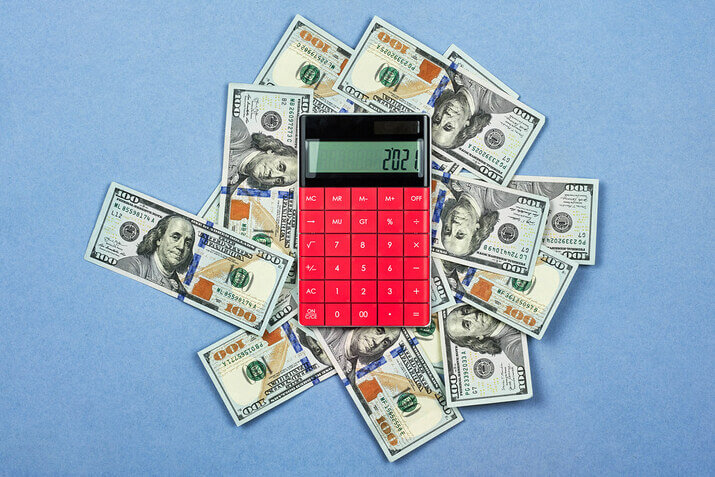How to Make a Budget That Works for You
Managing your finances can be tough. It’s hard enough to make ends meet, let alone save money for the future. But what if I told you that there was a way to take control of your finances, get out of debt, and save cash? It all starts with creating a household budget.
Table of Contents
ToggleA household budget is an important tool that can help you track your spending. But how do you create a budget that works for you? And once you have a budget, how do you stick to it? In this blog post, we’ll give you some tips on how to make and manage a budget that works for you.
Having a household budget is the number one way to improve your financial health. It is almost impossible to know how much you are spending without writing it down. Creating a budget takes a bit of work on the front end, but once you have it written, making adjustments each month is pretty simple. Grab a pen, paper, and a calculator, and let’s get started. Here are the items you will need to make a budget.
What is a household budget, and why do you need one?

A household budget is simply a plan for how you will spend your money. It allows you to track your income and expenses so that you can make informed financial decisions. Creating a budget can help you to save money, pay off debt, and achieve your financial goals.
Some people shy away from creating a budget because they think it will be restrictive. However, a budget does not have to be restrictive. It can give you more freedom to spend your money the way you want to. The key is, to be honest with yourself about how you’re spending money and make adjustments as needed.
If you are not sure where to start, there are many resources available to help you create a budget that works for you and your family. Once you have created a budget, stick to it as best you can. Remember, it is ok to make adjustments as your needs change. The most important thing is that you remain aware of your financial situation and make decisions that are in line with your goals.
How to create a budget that works for you
A household budget is essentially a plan for how you will spend your money. This means taking a close look at your income and expenses and then creating a spending plan that aligns with your financial goals. Of course, sticking to a budget is not always easy.
There may be months where unexpected expenses pop up, or you may simply be tempted to overspend. However, by remaining aware of your spending and making adjustments as needed, you can stay on track and reach your financial goals.
Determine your total income after taxes
In addition to your regular income, you may also have other sources of income that you need to take into account, such as investments or gifts. When calculating this you can put it under the category of projected income.
There are two main types of income that people talk about, net income and gross income. Net income is your after-tax income, which is what you’ll have available to work with each month. Gross income is your before-tax income, which is typically higher than net income.
When it comes to creating a monthly budget, one of the most important factors to consider is your total income. This number will act as the foundation for your entire budget, so it’s important to be as accurate as possible.
Make a list of all your expenses
Making a list of all your monthly expenses can help you to stay on track and avoid overspending. Start by listing all your fixed expenses, such as rent or mortgage payments, car payments, and insurance premiums.
Then, list your variable expenses, such as groceries, gas, and entertainment. Finally, don’t forget to include occasional expenses, such as gifts and travel. Here is a list of possible things you should include in your list.
Household Expenses
- Mortgage
- Utilities
- Car Payment
- Gas
- Car insurance
- Groceries
- Eating out
- Retirement savings
- General savings
- Entertainment
- Emergency Fund
- Gym Membership
- Health Insurance
Categorize into fixed expenses and variable expenses
Fixed expenses are those that remain the same every month, such as your mortgage or rent payment. Variable costs, on the other hand, can fluctuate from month to month, such as your grocery bill. By understanding which expenses are fixed and which are variable, you can begin to make informed decisions about where you can cut back to save money.
When it comes to variable expenses, it is best to take an average of the last few months to come up with a number you can put on your personal budget. So grab a calculator and add up the last 3 months of your gas bill and then divide by three(3). This will give you an approximate number you spend each month.
Set goals for how much you want to save each month/year
It’s important to have savings goals, and even more important to stick to them. Whether you’re looking to save up for a down payment on a house or you just want to build up an emergency fund, setting aside money each month is crucial.
But it can be tough to stick to your savings goals if you don’t have a plan. That’s why it’s important to budget for your savings. Just as you would with any other expense, allocate a specific amount of money that you want to save each month. Then, make sure you put that money into your savings account. Automating your savings can help make sure that you always meet your goals.
And if you have debt, focus on paying that off first before you start saving. But once you’re debt-free, make sure to keep up with your savings plan so that you can achieve your financial goal. For tips on paying off debt, skip ahead and read my section on the debt snow ball. One you get rolling you’ll be so excited it will be hard to stop!
Managing a budget so it works for you

The best way to stick to your budget is by tracking your spending. This will help you see where your money is going and identify any areas where you may be overspending. There are several ways you can track your spending, including using pen and paper, using Excel or another type of software, or using one of the many apps available.
Once you start tracking your spending, you may be surprised at how much money you’re spending in certain areas—especially if those areas are non-essential expenses like entertainment or eating out. If you find that you’re overspending in certain areas, don’t be discouraged—just make adjustments to your budget so that it better reflects your actual spending habits.
Where to make spending cuts
Finding places to make cuts to your spending can be difficult, but now that you have it written, it should become clear where your spending is a bit “fluffy.” Some places to look to make cuts include:
- Entertainment spending
- Eating out
- Groceries
- Gas
Instead of eating out once a week or going out on Friday nights, try staying in. There are many articles accessible about ways to reduce your expenses, and it will be simpler to get started now that we know where our spending is excessive.
How do I Make Adjustments to Your Budget?
As we mentioned above, it’s important to make adjustments to your budget as needed so that it accurately reflects your spending habits. If you find that you’re consistently overspending in certain areas, consider cutting back in those areas or allocating more money towards them in your budget.
On the other hand, if you find that you’re consistently underspending in certain areas, consider reallocating some of that money towards savings or an emergency fund.
The most important thing is to find a balance that works for you—a balance between saving money and still being able to afford your basic needs and wants. By following these tips on how to make and manage a budget, we hope that YOU can find that balance!
How do I get out of debt?

Evaluate your expenses and figure out where you can cut back
Thankfully if you already read to this point you have already done this. If not, go back up to the top and start the process of making a budget. If you need additional help cutting expenses check out my post on being more frugal!
Negotiate with your creditors to get a lower interest rate
If you’re like most people, you probably have a love-hate relationship with your credit card companies. On the one hand, they make it easy to buy the things you want (or need). On the other hand, they charge sky-high interest rates that can make it difficult to pay off your balance. Fortunately, there is a way to get the upper hand in this relationship: negotiating a lower interest rate with your creditors.
Most people assume that their credit card companies are inflexible when it comes to interest rates. However, the truth is that creditors are often willing to negotiate – especially if you threaten to transfer your balance to another card with a lower rate.
Before you start bargaining, it’s important to do your homework and know exactly what kind of offer you’re willing to accept. Once you’ve got a target interest rate in mind, give your creditor a call and see if they’re willing to meet your demands. If not, don’t be afraid to walk away and take your business elsewhere. After all, it’s better to pay less interest than none at all.
Use the debt snowball to burn through debt!

My preferred way of paying off debt is to use the debt snowball. It is a debt reduction strategy where you make payments on your smallest debt first while making minimum payments on your other debts. Once the lowest debt is paid off, you roll the amount you were paying on that debt into paying off your next smallest debt, and so on until all of your debt is gone. It’s called the debt snowball because it gains momentum as you pay off each debt, much like a snowball rolling down a hill.
One advantage of the debt snowball method is that it can help to keep you motivated. It is very helpful to see progress being made on your debt, even if it’s just a small amount at first. With each debt that you pay off, you’ll have one less payment to make each month, freeing up more money to put toward your remaining debts.
Whether or not the debt snowball method is right for you will depend on your situation. If you have a lot of small debts, this method might work well for you. However, if you have one large debt, you might want to consider using the debt avalanche method instead, where you make payments on your debt with the highest interest rate first. No matter which method you choose, the important thing is to make a plan and stick with it so that you can get out of debt as quickly as possible.
Sell unused belongings for extra cash

If you’re like most people, you probably have a lot of stuff that you don’t use. Whether it’s clothes that don’t fit, outdated gadgets, or knick-knacks that you’ve grown tired of, we all have items taking up space in our homes. Instead of letting all that stuff sit around and collect dust, you can sell them and get a headstart on your debt snowball!
By selling your unwanted items, you can generate extra money to help pay off your debt. And the best part is, it’s pretty easy to do. There are several online platforms and apps that make it simple to sell your stuff. So before you throw out your next unwanted item, think about how selling it could go toward your debt payments. So before you go out and buy something new, take a look around your house and see what you could sell to make some extra cash flow.
How much should I be spending?

When it comes to budgeting, there’s no one-size-fits-all answer. How much you should be spending in each category will depend on your income, your family size, your lifestyle, and your financial goals. That said, there are some general guidelines you can follow to ensure that your budget is balanced and healthy.
For starters, you should aim to keep your fixed expenses (such as housing and transportation) to 50% or less of your total income. This will leave room for variable expenses (like food and entertainment) and savings. As for specific categories, experts generally recommend that you spend the following percentages of your income:
- Mortgage 25-30%
- Utilities 5-10%
- Car Payment <10%
- Gas <10%
- Groceries 10%
- Eating out 5-7%
- Retirement Savings 10-15%
- Entertainment 5-10%
Of course, these are just guidelines. Ultimately, it’s up to you to decide what percentage of your income you want to allocate to each category. The most important thing is to create a budget that works for you and helps you meet your financial goals.
Put your new budget into action

Conclusion paragraph: Now that you have seen where your money is going, it is time to take some action. Take a few minutes each month to sit down and look over your budget. If you find that your spending habits have changed, make the appropriate adjustments to your budget.
As you pay down debt and get back on track, remember to be careful not to relapse into bad spending habits. Follow these simple steps and before you know it, you will be living life with less financial worry and more peace of mind.
So what are you waiting for? Start creating your budget today! But before you go, we want to hear from you. What was the most shocking thing that you discovered while creating your budget? Leave us a comment below and let us know.
Here is a link to a site I found very helpful as I was researching budgeting.
Creating a budget is a huge deal and you should be proud of yourself for taking the first step. Did you recently realize you were spending much more on something than you had thought? Share with us in the comments.








Im more than happy to discover this web site. I want to to thank you for ones time for this wonderful read!! I definitely enjoyed every bit of it and I have you saved as a favorite to look at new stuff in your site.